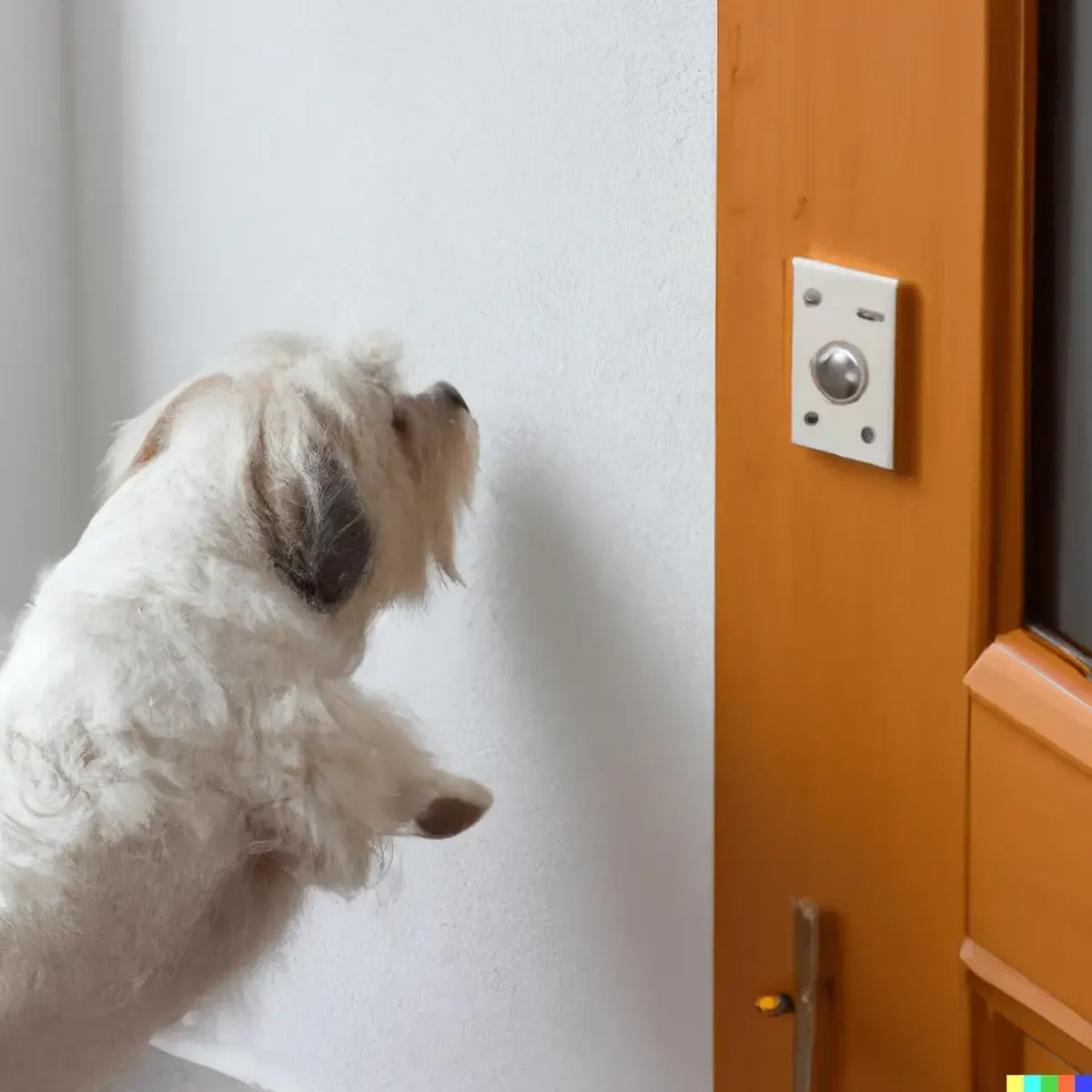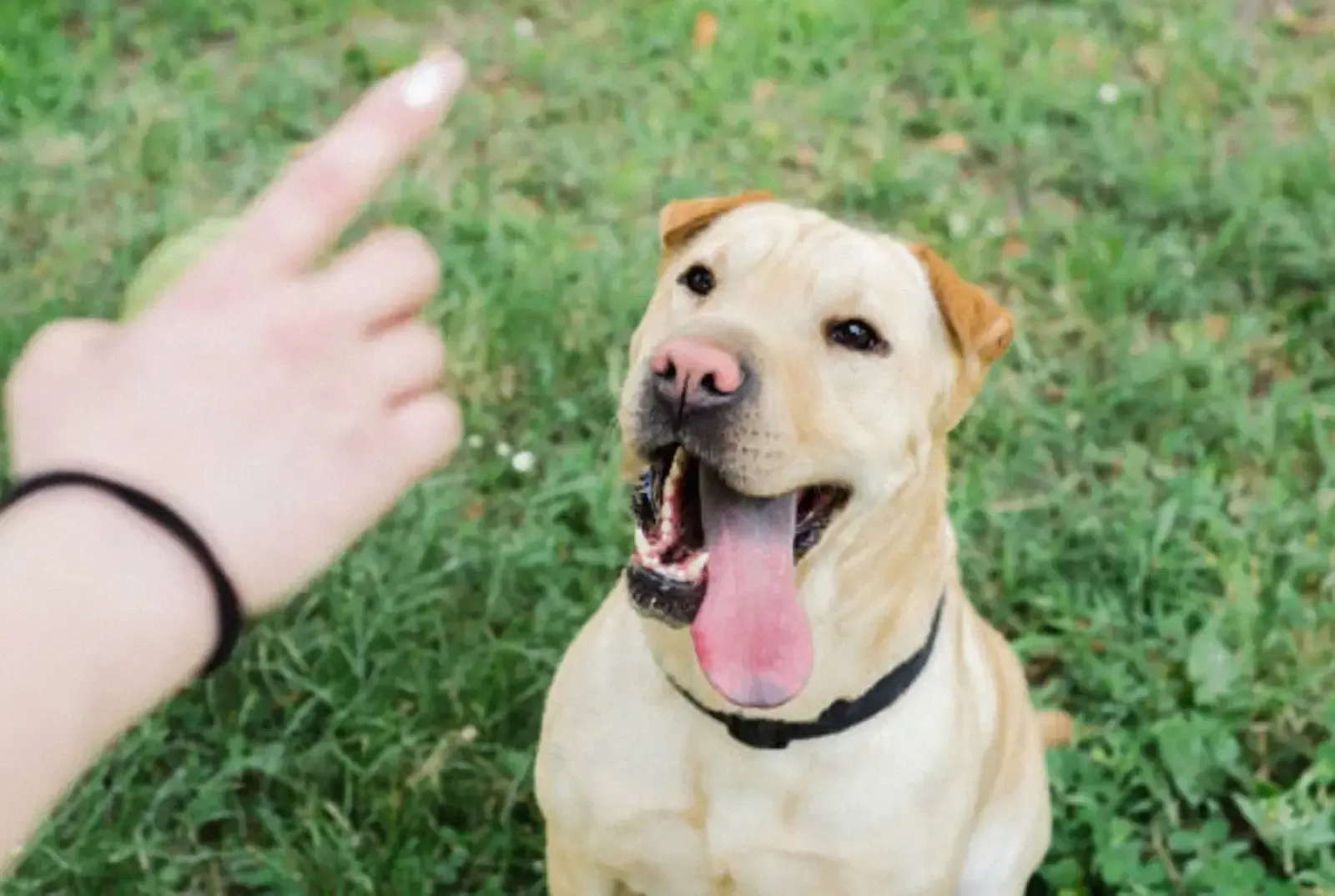Frustration in dogs - dog training
Leash reactivity is often the result of frustration

Disclaimer : The following blog is not ideology-based training; it deals with real-life problems observed in dogs and is based on science and research from various literature resources.
Frustration is a negative emotional state implicated in a range of canine behaviour problems.
Frustration has been variously defined as an emotional response that occurs when a predetermined expectation is violated; a dog's response to an unexpected reduction or omission of an incentive; and mild activation of the reactive aggression (RAGE) system, which increases in proportion to the intensity of the thwarted desire. Frustration can arise in a variety of situations, such as when rewards are absent, reduced, or delayed; when one is prevented from obtaining or retaining a resource; when barriers to autonomous control exist, such as when accessing an incentive or avoiding an aversive, or when personal space and territory are invaded. In varying degrees, frustration has been connected to aggressive behaviour displays, including redirected aggression. Barrier frustration can result in redirected and/or violent behaviours when a dog is prevented from acquiring the desired stimulus, such as by a door or leash. Within the umbrella phrase "separation-related disorders" in dogs, frustration has been identified as a fundamental emotional differentiation. Frustration and the development of repetitive and compulsive behaviour disorders have been linked. In fact, a lack of autonomous control over the environment is present in all of these circumstances and is a contextual identifier of frustration. Frustration has been linked to the execution of displacement and repetitive behaviours, such as stereotypes. It is hypothesised that frustration evolved to stimulate responses when an individual is confronted with threats to obtaining, protecting, and maintaining resources. Since frustration is considered a negative emotional state, frustration-related behaviours in dogs are regarded as a potential welfare issue.
As with other affective states, impatience manifests as a distinct emotional reaction, mood (period of irritation), and personality feature (consistent behavioural predisposition over time and location). These types have been studied in the human literature, such as state vs trait anger (including some components of frustration and a scale devised by Harrington to measure trait-level frustration tolerance/intolerance) (i.e., frustration tendencies). Research on frustration in dogs has tended to focus on the immediate emotional response rather than the disposition associated with mood or temperament. Considering frustration in the daily lives of owned dogs and the consistency of response across contexts may shed light on a more general disposition than a context-specific disposition. When diagnosing an issue in the field of clinical dog behaviour, it is crucial to understand both the reason and the likely underlying emotion (e.g., distinguishing fear/anxiety from impatience) so that a particular treatment may be administered. In addition, it is vital to distinguish between a dog who exhibits irritation in a single challenging situation (state level) and a dog who is generally frustration intolerant (trait level), as they may require distinct treatment approaches.
In the daily lives of companion dogs, the existence of physical barriers such as doors or being constrained on a leash, both of which prevent a dog from getting the desired resource, can provoke frustration. A wanted resource may be a social (person or conspecific) or non-social (pursuit of prey, food access, etc.) stimulus. In addition to fear, frustration may occur when access to safety is denied. In circumstances where expectations are not satisfied owing to an absent, diminished, or delayed reward, frustration may also occur. The absence of a reward may arise when an owner fails to provide the dog with access to a resource it anticipated (e.g., an owner may be in a rush to return from a walk and not allow the dog off lead to play with a conspecific as usual). Reduced reward happens when a dog receives less than expected, although departures from a predetermined schedule may result in frustration from a delayed reward (e.g., if a dog is walked or fed at a later time than usual). Situations in which there is competition over a restricted resource (e.g., one bone and two dogs vying for it; the shoe the dog wants to chew, but the owner wants it back) can also result in frustration due to the fear of resource loss. Territory and personal space are also essential resources linked with higher autonomy; hence, if a dog perceives a potential incursion into his/her personal space and/or territory, frustration may ensue. In fact, a lack of autonomous control over the environment is present in all of these circumstances and is a context-specific indicator of frustration.
Given that frustration exists to energise responses in order to boost concentrated efforts to achieve a desired goal, frustration-related behaviours are likely to vary depending on the target. However, typical component features of frustration include relatively high physiological arousal, communication of the desire for autonomy through aggressive displays (e.g., snarling, growling, snapping, biting), and behavioural tendencies associated with increased efforts, such as pulling/lunging on lead or digging at a barrier to access the desired resource. These efforts may be accompanied by vocalisations (such as whining, barking, and growling), and if the goal cannot be accomplished, redirected (e.g., rapid snatching of the lead) or displacement (e.g., sniffing, scratching, spinning, and tail chasing) behaviours may be noticed. Frustration may play a role in the long-term development of some repetitive and compulsive behaviours. Given these responses, it is not surprising that frustration is frequently implicated in many of the behavioural issues affecting dogs. Because of the type and severity of frustration-related behaviour, there is also a risk of others being injured. Despite the importance of these issues, the identification of individual dogs with low frustration tolerance is currently based on instruments with aspects only vaguely related to frustration [such as "self-assurance" and "amicability" on the Monash Canine Personality Scale] or subjective trainer evaluation. The absence of a more precise and objective assessment tool has an impact on the evaluation of treatments intended to address these concerns, and is therefore a key hurdle to the field's growth.
Frustration breakdown
General frustration would be predicted to be experiencing and displaying signs of frustration regularly and in various aspects of their daily life. Interventions which focus on the development of general frustration tolerance may be particularly valuable. It must be recognised that many chronic painful conditions manifesting as behavioural problems go unrecognised.
Barrier frustration/perseverance would be predicted to persevere in attempting to achieve a specific goal, despite the presence of a physical barrier and at such a time, an owner may find them difficult to distract/interrupt. Classic example of the barrier frustration is dog barking at the door knock. Interventions focused on building tolerance around a gradient of barriers may be useful in this instance.
Unmet expectations would be predicted to struggle to cope in situations where an expectation is not met, such as a routine change (absent or delayed reward). Classic example is a dog barking at other dogs due to frustration of not being able to meet (reminds me of Aldo a mix breed). We would suggest that interventions focused on creating positive associations with change may be valuable.
Autonomous control might be expected to display problems (which may include aggressive behaviours) where there is a loss of freedom to act independently (due to restraint or confinement) and when there are threats to resources such as territory, food, or toys. For example, dog is biting its lead when owners stop to chat with someone or food aggression. Interventions based on teaching dogs to form positive associations with restraint, handling, confinement, and approach when in possession of resources may be useful here.
Frustration coping would be predicted to struggle to relax and settle when faced with a situation where they cannot achieve their goal. For example, the dogs who always want to play with other dogs and don't how to stop. Interventions which focus on teaching dogs how to cope with such disappointments may be most appropriate.
There may be a relationship between frustration and impulsivity, but this remains to be determined. Impulsivity is characterised by a predisposition for quick, unplanned reactions without proper thought of the implications. In contrast to impulsivity, which refers to the general executive control of behaviour and cognition, frustration is a general emotional state. Low frustration tolerance and impulsivity are frequently correlated in humans, especially in relation to aggressive behaviour, according to a considerable body of research on the subject. Individuals that are more impulsive may find themselves in more frustrating circumstances due to poor decision making. This could be due to a failure to consider and hence foresee the repercussions of their actions, or it could be due to variances in sensitivity to reward or punishment.
The finding that younger dogs tended to have greater frustration intolerance is consistent with the finding that younger dogs exhibit higher levels of impulsivity and positive activation (i.e., they have greater sensitivity to rewards). These two characteristics will make individual dogs more prone to experiencing frustration. Younger dogs are more engaged in exploration, and obstacles to exploration, such as being on a leash, can lead to increased frustration. As they age, they may acquire expectations based on what generally occurs in a specific situation; as a result, they may experience less dissatisfaction as their expectations are reasonable and substantially realised.
It is also likely that intact/unneutered dogs develop a higher tolerance for frustration since they are often denied access to a sexual partner in our society. Alternately, entire dogs may be managed more carefully in certain circumstances, such as with other dogs, to prevent unintended breeding or encounter with the opposite sex, therefore, increasing frustration tolerance. It is difficult to arrive at definitive conclusions for entire dogs as there are other forces at play.
Another potentially surprising relationship is the weak to a moderate positive correlation between the reported frequency of exposure to frustrating situations and the dog's ability to deal with frustration. There are a number of possible explanations for this: a dog owner may find it difficult to manage the overt behaviours of a frustrated dog and therefore avoid situations that may trigger these responses, resulting in a decreased frequency of exposure; or a dog may become accustomed to frustrating situations if they are encountered frequently. This further emphasises the need for finding effective, evidence-based therapies to assist in the treatment and even prevention of this problem.
There is a trend where frustration decreases as the size of the dog increases, i.e., smaller dogs are more frustrated. This size-related effect is consistent with aggressiveness toward people (as reported by Martínez et al).and the prevalence of behaviour problems (reported by McGreevy et al). Whilst it has been suggested that this may have a genetic basis, there are other explanations for this observation. Management may play a role, with smaller dogs possibly more likely to be lifted/carried or physically restrained compared to their larger counterparts, which may lead to increased frustration-related issues related to autonomous control. Another possible explanation is that frustration-related behaviours and associated risks may be better tolerated (and therefore not addressed) by owners of smaller dogs compared to owners of larger dogs (as found by Guy et al).










